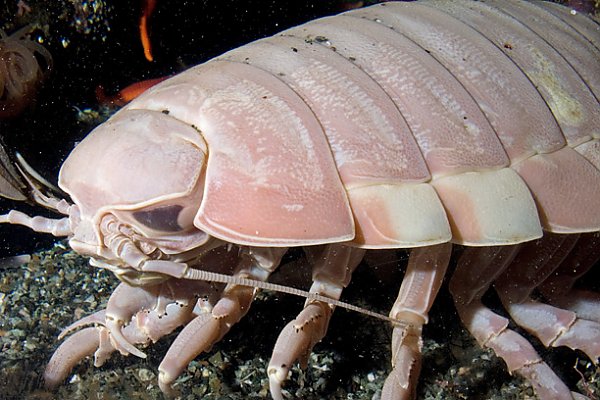Chances are, you’ve never encountered a giant isopod unless you’ve spent time trawling the deep ocean and accidentally snagged one in the tangles of your fishing net.
Perhaps you may have seen one in captivity at one of the few aquariums that house them. Regardless, you may be fascinated to learn that there are tons of these humongous bug-like creatures living in the darkest depths of the sea. And yet, they remain somewhat a mystery to us humans.
“There’s a lot we really don’t know about these guys,” says Ruth Carmichael, senior marine scientist at the Dauphin Island Sea Lab and professor of marine and environmental sciences at the University of South Alabama. But what scientists do know is that “they have a really important job [debris recycling] that we need animals to be doing in the deep ocean.” More on that in a minute.
Giant isopods look surprisingly similar to tiny, land-dwelling roly-polies, except their exoskeleton is brown or pale lilac in color. And like their roly-poly cousins, giant isopods can roll up into a ball and use their tough outer layer as a shield.

Similar to roly-polies, the body of the giant isopod is composed of seven overlapping segments. On giant isopods, these segments are called pleonites. The first is fused to the head and protrudes over the animal’s large, far-spaced eyes like a helmet. The eyes have more than 4,000 individual facets which reflect light, making the eyes appear to glow.
The remaining six segments of the giant isopod form the abdomen and each isopod has seven pairs of pereopods, or legs. The first pair of pereopods is designed to help push food into the animal’s four sets of jaws, which then cut and tear at the prey. The other legs, called natatory legs, are used for swimming.
Opposite the head is a fanlike tail, called a uropod, and fluttering swimmerets, called pleopods. These work together to propel the giant isopod through the water as well as help with respiration.
Giant isopods also have two sets of antennae sprouting out of their heads — a short pair and a long pair that extends about half the length of the body. These help guide the animals around the dark, murky depths of the ocean.

“As far as we know, they are primarily scavengers,” Carmichael says, hoovering up debris that’s fallen to the deep ocean floor, including live and dead fish, crabs, shrimp, squid, sponges and whale carcasses. “They play an important role in nutrient and element recycling.”
Relying on food sources at the bottom of the deep sea can be a feast-or-famine situation, but that’s no problem for giant isopods. When food supplies are plentiful, these creatures don’t mind gorging themselves, though doing so tends to stimy their locomotion. And at times when supplies are scarce, giant isopods can adapt, as well. In protected environments such as aquariums, they’ve been known to survive up to four years without food.









